To further Wild Ones’ mission to connect people and native plants, we are excited to continue this monthly blog focused on native plants in the national news. This regular feature aims to educate, engage, and inspire action by spotlighting conservation issues and scientific findings related to native flora.
Tennessee: Free Trees, Please!
Reflection Riding Arboretum & Nature Center, the City of Chattanooga and Electric Power Board of Chattanooga (EPB) collaborated to offer Chattanoogans free native trees under the Tree ReLeaf program. The program was created by the City of Chattanooga and Reflection Riding as an effort to improve water quality and stormwater runoff after tornadoes struck the area in 2020. When EPB joined the program Fall 2022, program eligibility expanded to all EPB customers.
Customers choose from two free trees among the seven native tree species offered: buttonbush (Cephalanthus occidentalis), paw paw (Asimina triloba), red buckeye (Aesculus pavia), silky dogwood (Cornus amomum), sweetbay magnolia (Magnolia virginiana), sweetshrub (Calycanthus floridus), and white fringetree (Chionanthus virginicus).
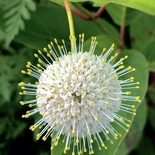
Common Buttonbush(Cephalanthus occidentalis)
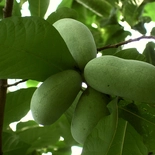
Pawpaw(Asimina triloba)

Red Buckeye(Aesculus pavia)
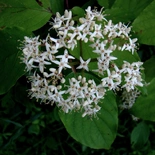
Silky Dogwood(Cornus amomum)
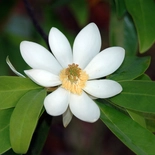
Sweetbay(Magnolia virginiana)
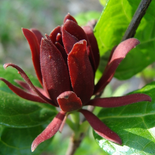
Eastern Sweetshrub(Calycanthus floridus)
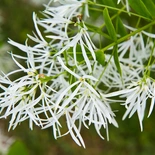
White Fringetree(Chionanthus virginicus)
The advantages of planting these native tree species include reducing stormwater runoff and flooding risks, increasing water and air quality, providing food and habitat to wildlife, and requiring less water and maintenance as native species than non-native ornamentals. Mark McKnight, the president and CEO of Reflection Rising, an environmental and conservation education non-profit stated: “Free Tree ReLeaf is an important extension of our Native Plant Nursery to reintroduce more native species in our community with the right information residents need to help them thrive. With EPB and the City, we’re making a difference every spring and fall to help our local ecosystem thrive.”
Free Tree ReLeaf Will Give Away 1,000 Trees Beginning Saturday -ThePulse
Invasive plants lead to invasive insects
A study published this month in BioScience found that non-native plants are a major driver of non-native insect invasions. The international team of researchers led by Dr. Cleo Bertelsmeier found that when invasive non-native plants arrive in a new region and become established, they create an ecological niche for the insects from the plant’s native range. When the insects arrive, they find their host plants and are more likely to become established. This, in turn, creates a niche for invasive predators and parasitoid insects to invade.
These findings have implications for invasive species management. The authors argue, instead of focusing on controlling invasive insect species, control measures should focus on invasive plant species. “Controlling the spread of undesired nonnative plant species would not only be beneficial because it mitigates the impacts of the plant species themselves, it would also reduce spillover of associated non-native insects to native plant species,” the authors stated.
Nonnative Plants are a Major Force Behind Global Insect Invasions -Phys.org
Restoring Biodiversity is Worth a Dam
The Yurok Tribe has received $18 million from the National Oceanic and Atmospheric Administration (NOAA) for the Upper Klamath River Tributary Post Dam Removal Salmonid Restoration Project revegetation project along the restored Klamath River section. The in-river portion of the Klamath dam removal project was completed in October. The dams had caused a 95% reduction in salmon populations by blocking 400 miles of habitat and degraded water quality. The Yurok Tribe, and other Klamath Basin tribes, have fought to remove these dams for decades. Now they are seeing salmon on the way to the Upper Klamath Basin for the first time in 100 years.
The Yurok Fisheries Department along with four tribes and two conservation organizations are working together to create 150 acres of fish and wildlife habitat by diversifying stream habitat, reconnecting floodplains, and improving fish passage. In January, the team planted over 16,000 pounds of native seeds throughout the area, 76,000 trees, shrubs, and grass plugs, 25,000 acorns, and 2,500 narrowleaf milkweed starts and recently hand-sowed millions of native seeds in what was once the J.C. Boyle Reservoir.
This effort will create biodiverse ecosystems that support salmon and other important fish species. The project is already working as the former reservoir was in bloom this year with flowers seeded last winter. Trees such as Oregon white oak (Quercus garryana), ponderosa pine (Pinus ponderosa), and Fremont cottonwood (Populus fremontii) and grasses such as blue wildrye (Elymus glaucus) are establishing and stabilizing the soil.

Oregon White Oak(Quercus garryana)

Ponderosa Pine(Pinus ponderosa)
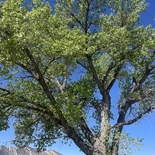
Fremont Cottonwood(Populus fremontii)

Blue Wildrye(Elymus glaucus)
Joshua Chenoweth, a Yurok Fisheries Department Senior Riparian Biologist who led post-dam removal work on the Elwha River and now the Klamath project, said “I’m happy with the volume and diversity of healthy plants that we are seeing right now. It bodes well for the future,”
Midwest: A Little Strip Goes a Long Way
Prairie strips, an idea developed by researchers at Iowa State University and Neal Smith Wildlife Refuge managers, are growing in popularity with farmers who are incorporating them into their croplands. Pioneering farmers and partnerships with nonprofits, universities and agencies helped this program take off but with the 2018 Farm Bill, prairie strips became official with the Conservation Reserve Program which gave farmers technical assistance and 50% cost-share to install prairie strips and annual payments for each acre that wasn’t farmed.

Big Bluestem(Andropogon gerardii)

Wild Quinine(Parthenium integrifolium)
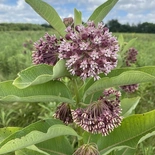
Common Milkweed(Asclepias syriaca)

Common Evening Primrose(Oenothera biennis)
Planting native midwestern species such as big bluestem (Andropogon gerardi), wild quinine (Parthenium integrifolium), milkweed (Asclepias spp.), common evening primrose (Oenothera biennis), and many other species help improve the soil, prevent surface runoff and erosion, and absorb excess water. The long roots of these native prairie plants also absorb excess nitrates and phosphorus; high levels of which have detrimental effects on human health and aquatic ecosystems.
Prairie strips also provide habitat to pollinators whose populations are declining and on which farmers depend on for a number of crops. The diversity and number of pollinator species found in these strips are higher compared to fields without native plants. Other wildlife also benefit from prairie strips: grassland birds, which have declined more than any other type of bird community in North America since 1970, are found in 3-fold higher density in these strips.
While reconstructing larger prairie patches and protecting the rare remnant prairies that are less than 1% of Illinois, Iowa, and Missouri ecosystems remains of utmost importance, prairie strips are also addressing soil, water, and biodiversity issues that these areas face. Lisa Schulte Moore, co-director of the Bioeconomy Institute at Iowa State University and who received national recognition in her part of developing the prairie strips practice with a MacArthur “Genius” grant, said “We know that we need clean water. We need to do a better job of keeping our soil in place in our fields where it can grow our crops. We know that we need to expand the home of Iowa’s native biodiversity. Maybe prairie strips can be part of that solution.”
Connecticut: Remove Invasives with the Garden Club
The West Hartford Garden Club meets weekly to remove invasive plants from Spicebush Swamp and hosted a walk on October 20th for the community to learn about and identify invasive species and low-impact ways to remove them.
The low-impact removal technique relies on cutting the invasive to ground level. This then keeps the plant from photosynthesizing and exhausts its root system. The group then plants native plants in the space wherever possible.

Porcelain Berry(Ampelopsis brevipedunculata)
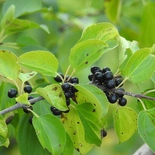
Common Buckthorn(Rhamnus cathartica)
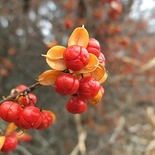
Oriental Bittersweet(Celastrus orbiculatus)
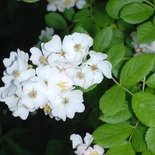
Multiflora Rose(Rosa multiflora)
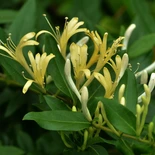
Japanese Honeysuckle(Lonicera japonica)
The club has been removing Porcelainberry (Ampelopsis brevipedunculata), Common Buckthorn (Rhamnus cathartica), Oriental Bittersweet (Celastrus orbiculatus), Multiflora Rose (Rosa multiflora), and Japanese Honeysuckle (Lonicera japonica).
West Hartford Garden Club Holding ‘Invasive Plant Removal Party’ at Spicebush Swamp -We-Ha.com
The Tree of Misery
Native to China, the Tree of Heaven (Ailanthus altissima) is a misnomer in the United States. This non-native species is able to grow in most soil types and when its leaves are crushed, releases a nasty odor. The Tree of Heaven is a profligate spreader; female trees produce 300,000 seeds each year and also spread by root up to 50 feet. If injured, more roots sprout. This species is also allelopathic, producing chemicals which prevent other trees from growing near it. Some people have allergic reactions to the tree’s pollen and contact dermatitis to its leaves, bark, and seeds. The abundance of this tree also provides reliable food for the invasive non-native insect, the spotted lanternfly (Lycorma delicatula).
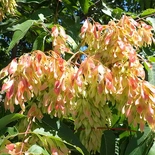
Tree Of Heaven(Ailanthus altissima)
Controlling the Tree of Heaven is difficult due to its root systems and the sheer amount of seeds that it produces. The University of Pennsylvania recommends herbicides such as glyphosate, used by professionals, applied during the mid- to late summer.
This Tree Isn’t So heavenly -Tribune Chronicle
California: Rising like a Phoenix from the Ashes
In March 2024, for the first time in its 50-year history, Jasper Ridge Biological Preserve was burned. The burn was done both as part of Stanford University’s wildlife management plan and with the Muwekma Ohlone Tribe of the San Francisco Bay Area, who taught participants about the significance of bringing fire back to their homeland.
Along the edges of the chaparral burn piles, plants are starting to return six months later. Among those growing prolifically in the burned area is the threatened western bewildering bushmallow (Malacothamnus arcuatus var. arcuatus), endemic to the San Francisco Bay Area. This plant requires fire to germinate and its seeds can remain dormant for decades.

Mendocino Bushmallow(Malacothamnus fasciculatus)
Since no plants were found in the middle of the burn piles, it was surmised that the heat in the middle of the piles was too intense for the seeds to survive but the edges, where the plants were found, were ideal conditions and speculated to be similar to what was typical of Indigenous regular “gentle” burning used to encourage plant growth and will guide management practices going forwards. This also underscores the importance of collaboration with Indigenous groups in learning from and caring for the land.
Prescribed Burns at Jasper Ridge Awaken a Rare Plant -Stanford Report.edu

